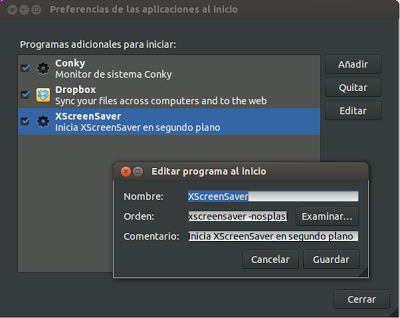
Like GNOME, KDE also decided to re-invent the wheel. This change will get blown away when you upgrade. Sudo ln -sf /usr/bin/xscreensaver-command \

If you figure it out, let me know! This still works for Cinnamon 4.8 and MATE 1.24: sudo ln -sf /usr/bin/xscreensaver-command \ This used to work, but no longer does with GNOME 3.38. 4: Make GNOME's "Lock" icon use XScreenSaver. Or, see the " Launching Xscreensaver from Systemd" section below.
#Xscreensaver nosplash plus#
Launch " Tweaks", select " Startup Applications", click the plus sign, and select " XScreenSaver" (not " XScreenSaver Settings") from the (very long) menu. " Settings / Power / Automatic Suspend" 3: Launch XScreenSaver at login. " Settings / Privacy / Screen Lock / Automatic Screen Lock" " Settings / Privacy / Screen Lock / Blank Screen Delay" Set all of the following settings to " Never" or " Off", as these are all controlled by xscreensaver-settings(1) now: Not any more! 1: Fully uninstall the other screen saver packages: sudo apt remove gnome-screensaverīe careful that it doesn't try to uninstall all of GNOME. Installing Xscreensaver on Gnome or Unityįor many years, GNOME included XScreenSaver as-is, and everything just worked. InstallationĮach desktop environment has its own system for launching long-running daemons like XScreenSaver, and since many of them come bundled with their own (buggy, insecure, inferior) screen-locking frameworks, it is also necessary to disable those other frameworks before XScreenSaver can work. Likewise, if you have systemd(1) or elogind(8), then all of the popular video players and web browsers will prevent XScreenSaver from blanking the screen while video is playing.īoth of these features require that xscreensaver-systemd(6) be able connect to D-Bus. So if you do not have systemd(1), you might want to get in the habit of manually locking your screen before closing the lid ( xscreensaver-command -lock). If not, then the screen might not lock until a few seconds after you re-open the lid. If your system uses systemd(1) or elogind(8), then closing the lid of your laptop will cause the screen to lock immediately. Whatever is in the ~/.xscreensaver file takes precedence. Note: if you use xset(1) to change the power management settings, XScreenSaver will override those changes. When the monitor is powered down, the display hacks are stopped (though it may take a minute or two for XScreenSaver to notice). If the power management section is grayed out in the xscreensaver-settings(1) window, then that means that your X server does not support the XDPMS extension, and so control over the monitor's power state is not available.

It saves the settings in your ~/.xscreensaver file. The xscreensaver-settings(1) program is where you configure if and when your monitor should power off. no-splashĭon't display the splash screen at startup.

log filenameĪppend all diagnostic output to the given file. For displays with multiple screens, XScreenSaver will manage all screens on the display simultaneously. Command-Line Options -display host:display.screen The display modes are run at a low process priority, and spend most of their time sleeping/idle by default, so they should not consume significant system resources.
#Xscreensaver nosplash windows#
When the user becomes active again, the screensaver windows are unmapped, and the running subprocesses are killed. The various graphics demos are, in fact, just standalone programs that do that. Because of this, any program which can draw on a provided window can be used as a screensaver. A sub-process is launched for each one running a graphics demo, pointed at the appropriate window. When it is time to activate the screensaver, a full-screen black window is created that covers each monitor. You configure it with the xscreensaver-settings(1) program. XScreenSaver is a daemon that runs in the background.

XScreenSaver is also available on macOS, iOS and Android. It can also lock your screen, and provides configuration and control of display power management. XScreenSaver waits until the user is idle, and then runs graphics demos chosen at random.


 0 kommentar(er)
0 kommentar(er)
